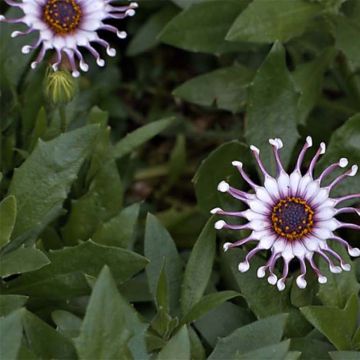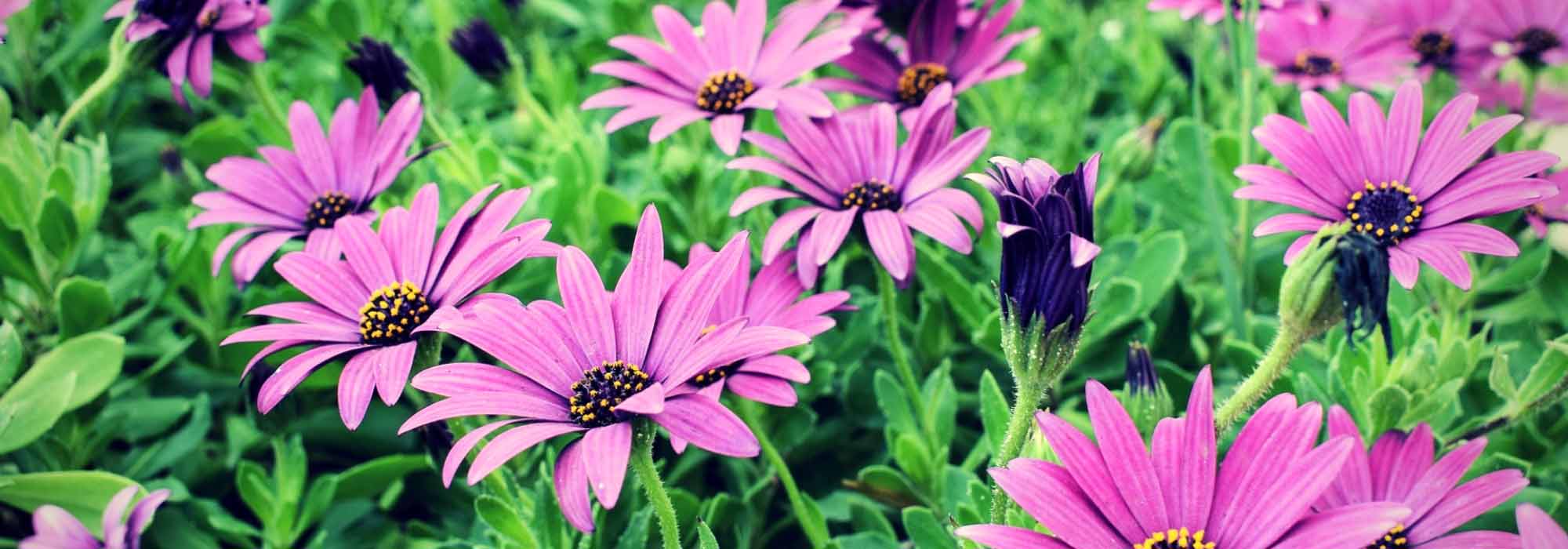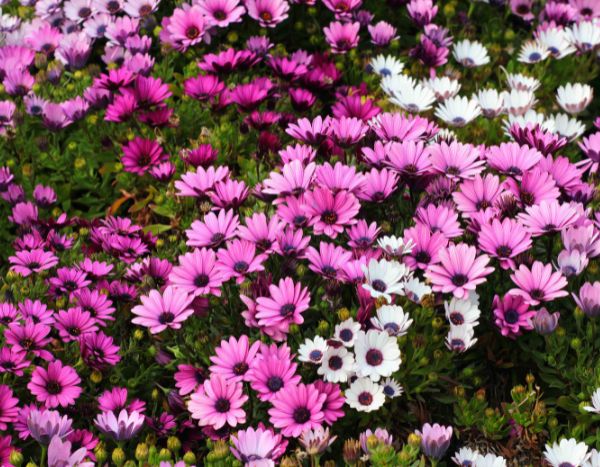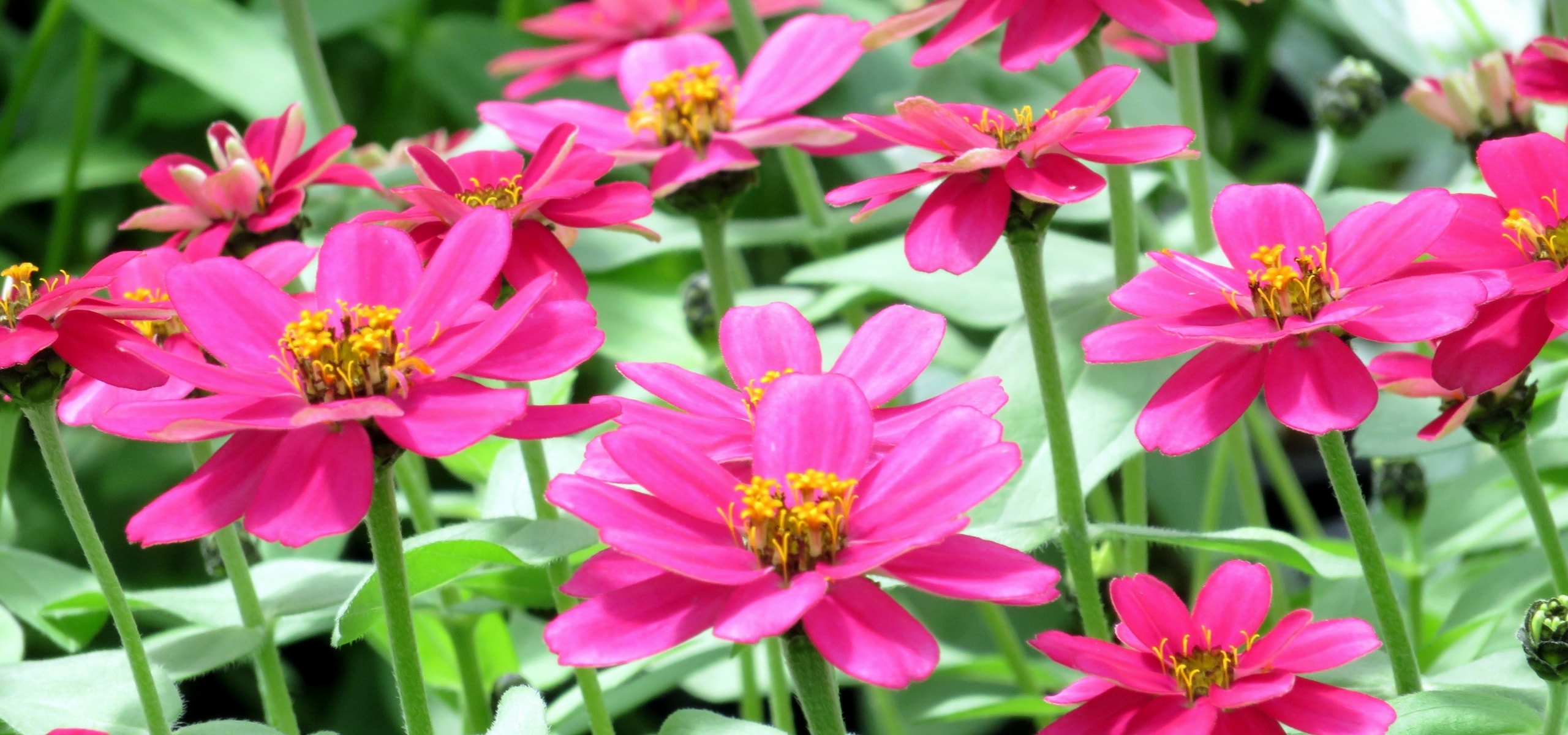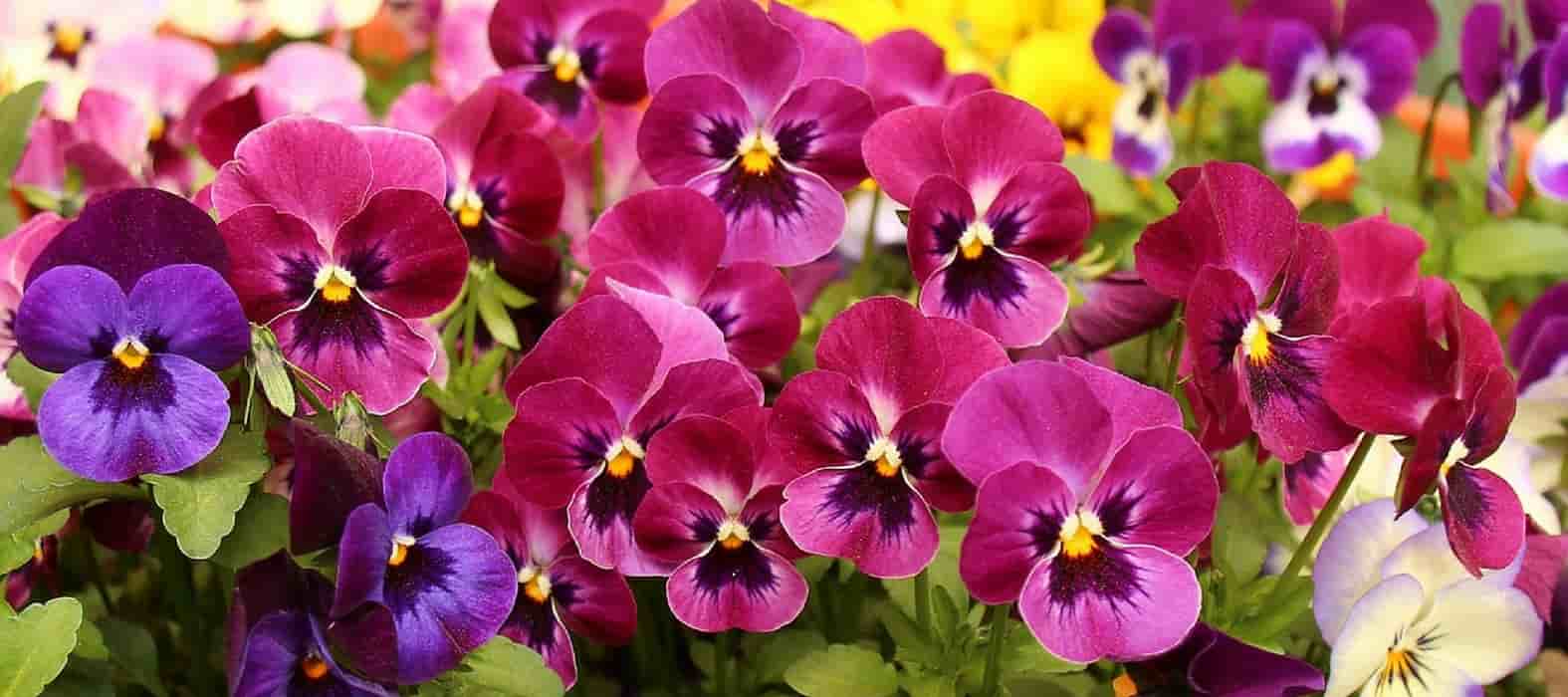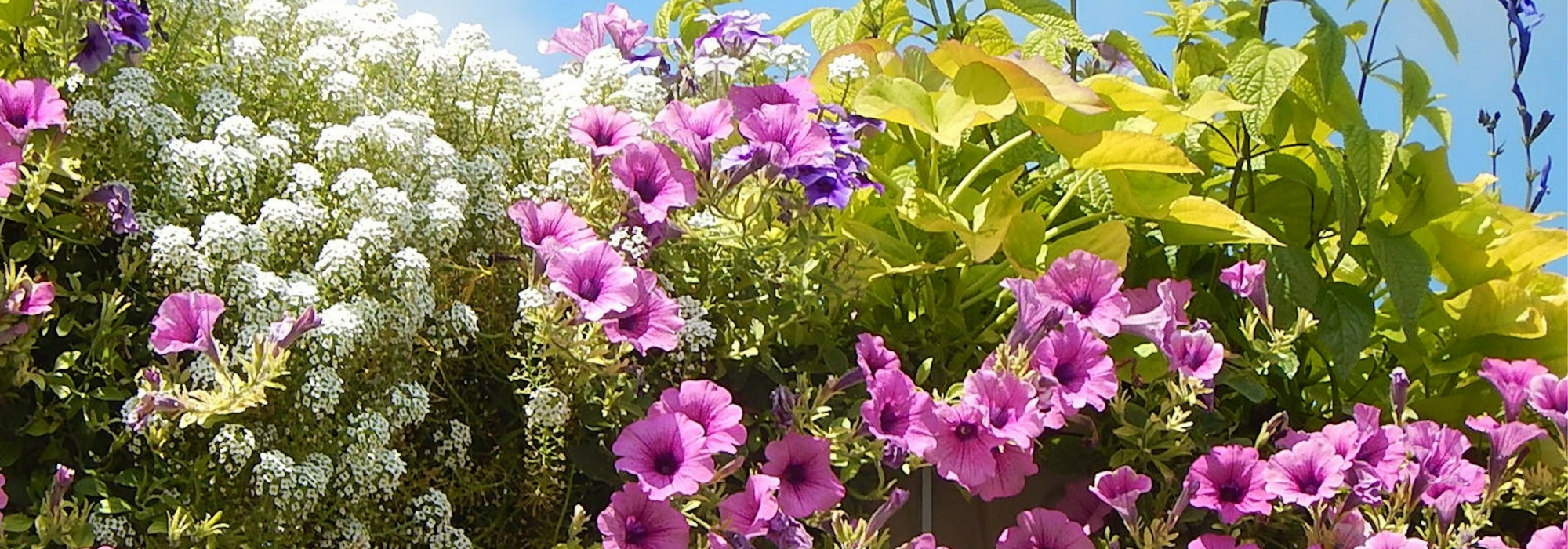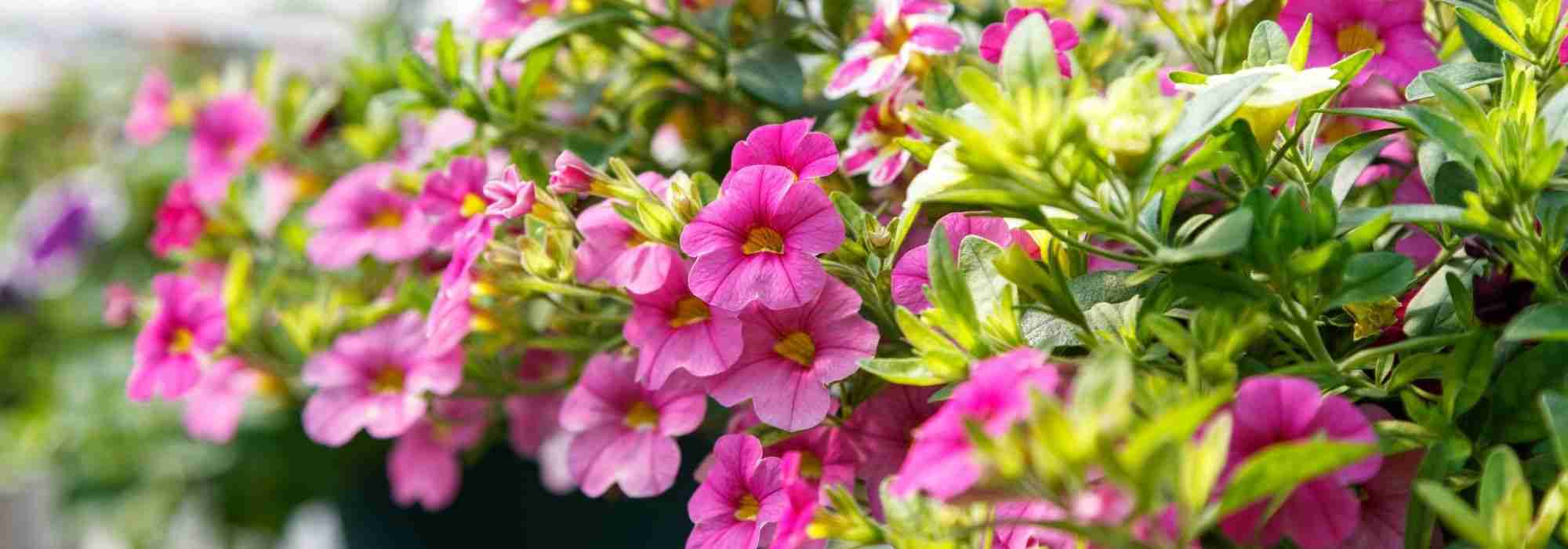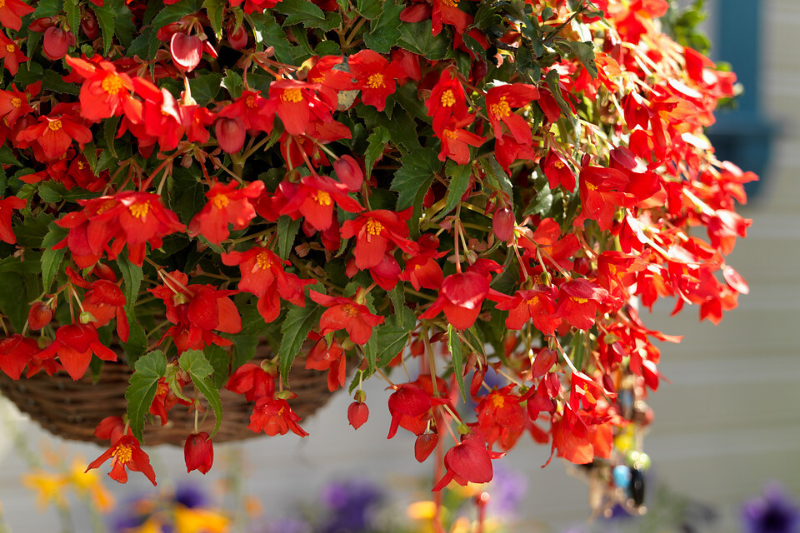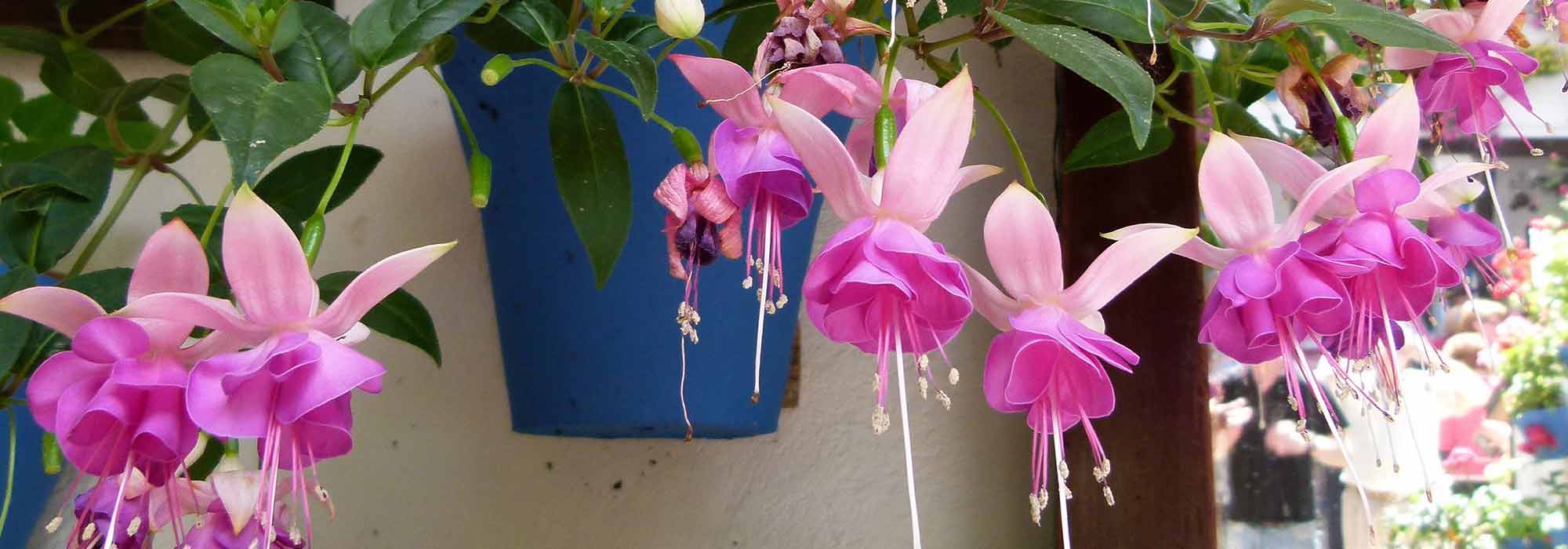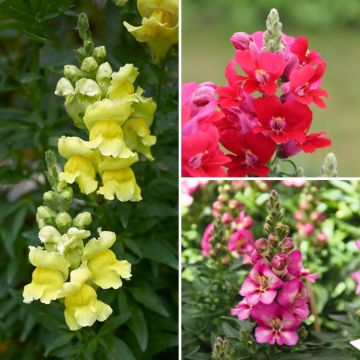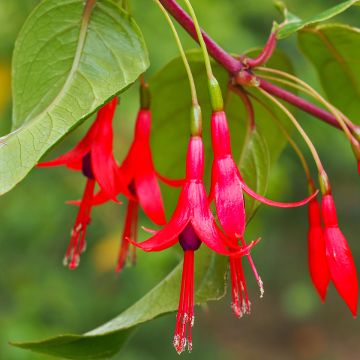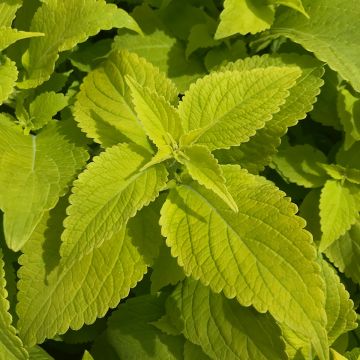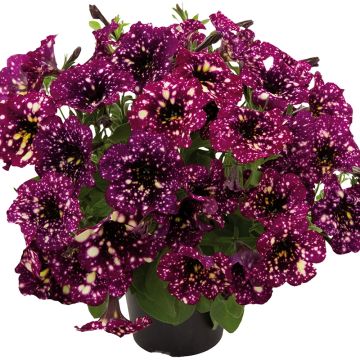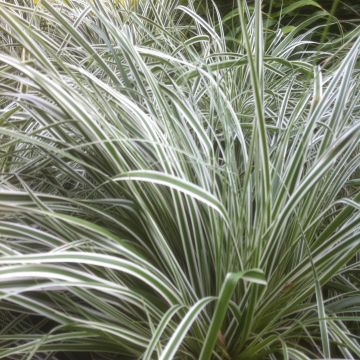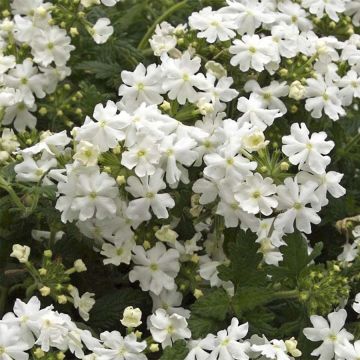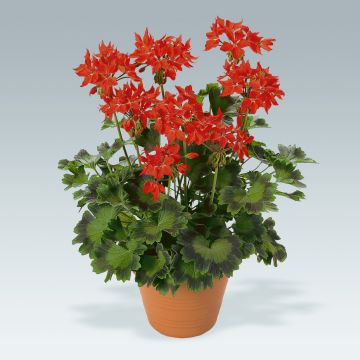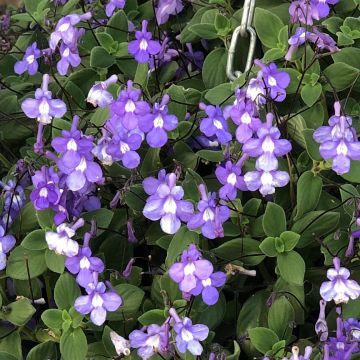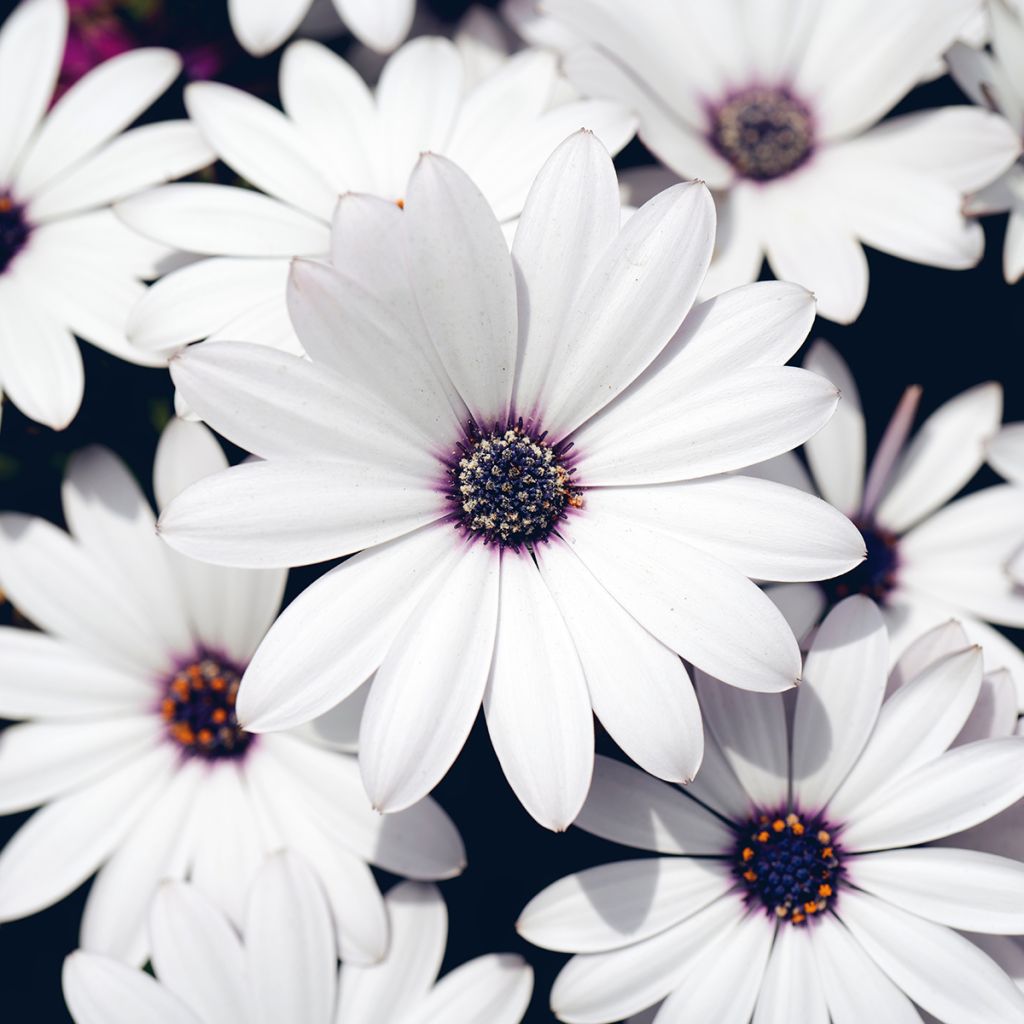

Osteospermum Cape Daisy White
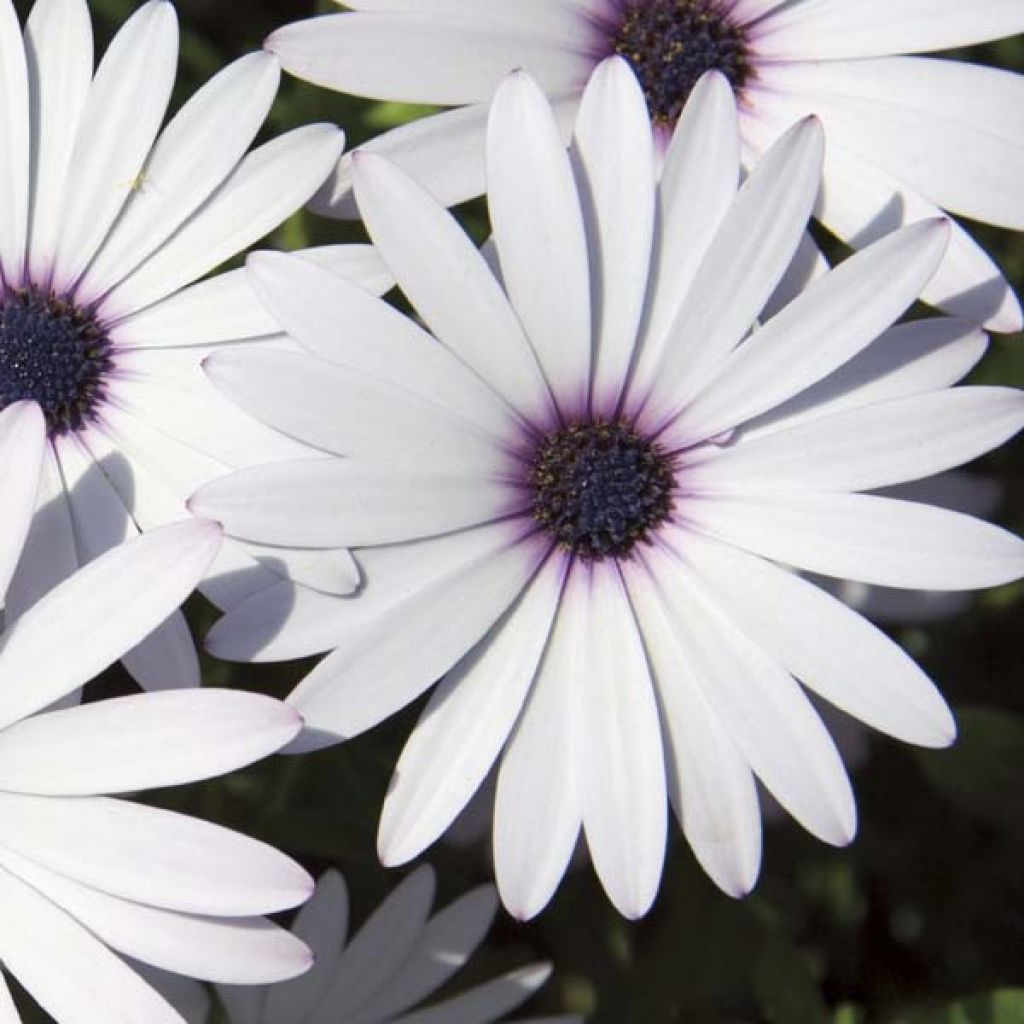

Osteospermum Cape Daisy White
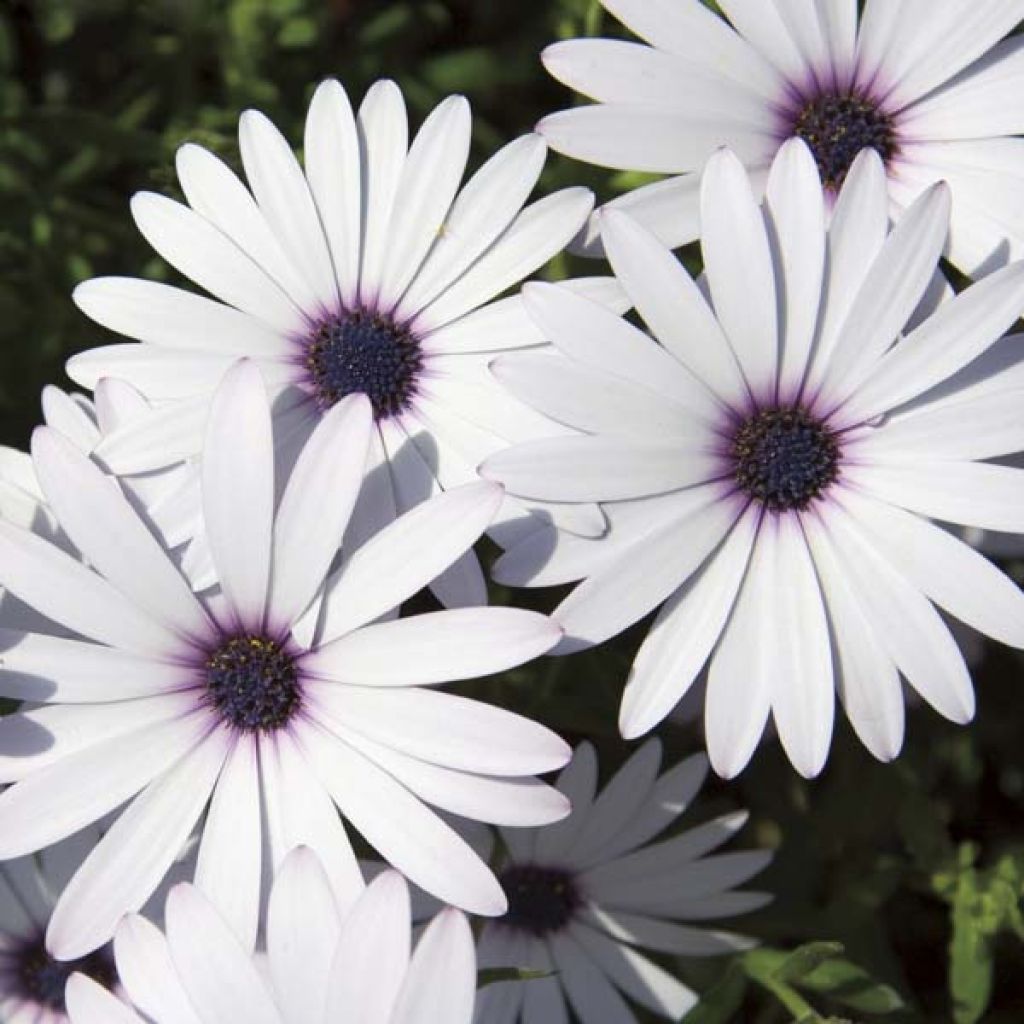

Osteospermum Cape Daisy White
Osteospermum Cape Daisy White
Osteospermum x ecklonis Cape Daisy White
Cape Daisy
In addition to being beautiful, they bloomed almost continuously until the first frosts. As these were not severe or long-lasting, I even see that some plants have survived the winter and appear to be regrowing. I'm really excited because this variety is truly superb!
Aurélie , 10/02/2024
Special offer!
Receive a €20 voucher for any order over €90 (excluding delivery costs, credit notes, and plastic-free options)!
1- Add your favorite plants to your cart.
2- Once you have reached €90, confirm your order (you can even choose the delivery date!).
3- As soon as your order is shipped, you will receive an email containing your voucher code, valid for 3 months (90 days).
Your voucher is unique and can only be used once, for any order with a minimum value of €20, excluding delivery costs.
Can be combined with other current offers, non-divisible and non-refundable.
Why not try an alternative variety in stock?
View all →This plant carries a 6 months recovery warranty
More information
We guarantee the quality of our plants for a full growing cycle, and will replace at our expense any plant that fails to recover under normal climatic and planting conditions.

Does this plant fit my garden?
Set up your Plantfit profile →
Description
The Osteospermum Cape Daisy White is a beautiful selection with white flowers derived from a South African perennial formerly called Dimorphoteca. Not very hardy, but very floriferous between spring and autumn, the Cape daisy is an excellent plant for terraces and balconies, often grown as an annual in our climate. By the seaside, it is planted in rockeries or raised beds where it survives the winter. The flowers of this variety resemble small white daisies adorned with an almost black centre, closing in the evening and if the light is insufficient. The Osteospermum Cape Daisy is an improved selection that has a nice upright and ramified habit, with a clean appearance.
Mainly originating from South Africa, Osteospermum, sometimes called Rain Daisy, are perennial or annual plants closely related to dimorphothecas, and belong, like them, to the Asteraceae family. Most osteospermums cultivated in gardens are hybrids between three species, with origins more or less uncertain. They are generally very robust plants, useful for ornamental dry soils. Their preferred region in South Africa corresponds to the Atlantic facade, which has a Mediterranean-like climate.
The 'Cape Daisy White' variety blooms from May-June to October, depending on the cultivation method and climate. The plant, maturing in a few months, will reach about 40 cm (15.7 in) in all directions, forming a beautiful cushion generously covered in flowers. Its flowers are simple, 5 cm wide, consisting of a peripheral collar of ligulate flowers in immaculate white, surrounding a small heart of dark blue sterile florets that gradually release yellow stamens. They are borne on strong, ramified stems emerging from green, dentate foliage. Usually grown as an annual in temperate climates, the plant can regrow from the stump in spring if the winter is not too cold (maximum hardiness -6°C) and the soil is well-drained.
A true ray of sunshine for the garden or balcony! Osteospermums have become indispensable, as they are very willing to cover dry slopes in open ground or terraces and balconies exposed to heat with a flowery blanket. They can be associated in a dry garden with catmints, Asclepias tuberosa, shrubby salvias, verbenas, lantanas, or immortelles. They will highlight borders and flower rockeries. Mixed together, they form remarkable ground cover. In flower pots, they can be combined with bidens, nemesias, or with Erigeron karvinskianus, for example.
Green plants measuring 4 to 8 cm in small 5-pack trays with a diameter of 2.8 cm (0.8 in) and a height of 4 cm (1.6 in). Our plants are at least eight weeks old and strong enough to be planted in open ground.
Note: Attention, our young plants in mini-trays are professional products reserved for experienced gardeners: upon receipt, transplant and store them under shelter (veranda, greenhouse, cold frame...) at a temperature above 14°C for a few weeks before planting them outside once all risk of frost has passed.
Flowering
Foliage
Plant habit
Botanical data
Osteospermum
x ecklonis
Cape Daisy White
Asteraceae
Cape Daisy
Cultivar or hybrid
Planting and care
Plant your osteospermums in the ground after the last frosts, in a very sunny location. You can also plant them in pots, initially placed in a sheltered location, which can be moved to any desired location in May. If you plant them in the ground, wait until the frosts have passed. Osteospermums require well-drained soil, but not necessarily very rich. Water moderately. In pots, regular watering is necessary in summer. Regularly remove faded flowers to prolong flowering. You can keep your osteospermums by bringing them indoors under a veranda or a cold greenhouse in winter. They can tolerate a slight frost, but can only survive the winter in the garden in a location protected from severe frost. Osteospermum is a perennial plant in coastal areas.
Planting period
Intended location
Care
Planting & care advice
-
, onOrder confirmed
Reply from on Promesse de fleurs
Similar products
Haven't found what you were looking for?
Hardiness is the lowest winter temperature a plant can endure without suffering serious damage or even dying. However, hardiness is affected by location (a sheltered area, such as a patio), protection (winter cover) and soil type (hardiness is improved by well-drained soil).

Photo Sharing Terms & Conditions
In order to encourage gardeners to interact and share their experiences, Promesse de fleurs offers various media enabling content to be uploaded onto its Site - in particular via the ‘Photo sharing’ module.
The User agrees to refrain from:
- Posting any content that is illegal, prejudicial, insulting, racist, inciteful to hatred, revisionist, contrary to public decency, that infringes on privacy or on the privacy rights of third parties, in particular the publicity rights of persons and goods, intellectual property rights, or the right to privacy.
- Submitting content on behalf of a third party;
- Impersonate the identity of a third party and/or publish any personal information about a third party;
In general, the User undertakes to refrain from any unethical behaviour.
All Content (in particular text, comments, files, images, photos, videos, creative works, etc.), which may be subject to property or intellectual property rights, image or other private rights, shall remain the property of the User, subject to the limited rights granted by the terms of the licence granted by Promesse de fleurs as stated below. Users are at liberty to publish or not to publish such Content on the Site, notably via the ‘Photo Sharing’ facility, and accept that this Content shall be made public and freely accessible, notably on the Internet.
Users further acknowledge, undertake to have ,and guarantee that they hold all necessary rights and permissions to publish such material on the Site, in particular with regard to the legislation in force pertaining to any privacy, property, intellectual property, image, or contractual rights, or rights of any other nature. By publishing such Content on the Site, Users acknowledge accepting full liability as publishers of the Content within the meaning of the law, and grant Promesse de fleurs, free of charge, an inclusive, worldwide licence for the said Content for the entire duration of its publication, including all reproduction, representation, up/downloading, displaying, performing, transmission, and storage rights.
Users also grant permission for their name to be linked to the Content and accept that this link may not always be made available.
By engaging in posting material, Users consent to their Content becoming automatically accessible on the Internet, in particular on other sites and/or blogs and/or web pages of the Promesse de fleurs site, including in particular social pages and the Promesse de fleurs catalogue.
Users may secure the removal of entrusted content free of charge by issuing a simple request via our contact form.
The flowering period indicated on our website applies to countries and regions located in USDA zone 8 (France, the United Kingdom, Ireland, the Netherlands, etc.)
It will vary according to where you live:
- In zones 9 to 10 (Italy, Spain, Greece, etc.), flowering will occur about 2 to 4 weeks earlier.
- In zones 6 to 7 (Germany, Poland, Slovenia, and lower mountainous regions), flowering will be delayed by 2 to 3 weeks.
- In zone 5 (Central Europe, Scandinavia), blooming will be delayed by 3 to 5 weeks.
In temperate climates, pruning of spring-flowering shrubs (forsythia, spireas, etc.) should be done just after flowering.
Pruning of summer-flowering shrubs (Indian Lilac, Perovskia, etc.) can be done in winter or spring.
In cold regions as well as with frost-sensitive plants, avoid pruning too early when severe frosts may still occur.
The planting period indicated on our website applies to countries and regions located in USDA zone 8 (France, United Kingdom, Ireland, Netherlands).
It will vary according to where you live:
- In Mediterranean zones (Marseille, Madrid, Milan, etc.), autumn and winter are the best planting periods.
- In continental zones (Strasbourg, Munich, Vienna, etc.), delay planting by 2 to 3 weeks in spring and bring it forward by 2 to 4 weeks in autumn.
- In mountainous regions (the Alps, Pyrenees, Carpathians, etc.), it is best to plant in late spring (May-June) or late summer (August-September).
The harvesting period indicated on our website applies to countries and regions in USDA zone 8 (France, England, Ireland, the Netherlands).
In colder areas (Scandinavia, Poland, Austria...) fruit and vegetable harvests are likely to be delayed by 3-4 weeks.
In warmer areas (Italy, Spain, Greece, etc.), harvesting will probably take place earlier, depending on weather conditions.
The sowing periods indicated on our website apply to countries and regions within USDA Zone 8 (France, UK, Ireland, Netherlands).
In colder areas (Scandinavia, Poland, Austria...), delay any outdoor sowing by 3-4 weeks, or sow under glass.
In warmer climes (Italy, Spain, Greece, etc.), bring outdoor sowing forward by a few weeks.






























